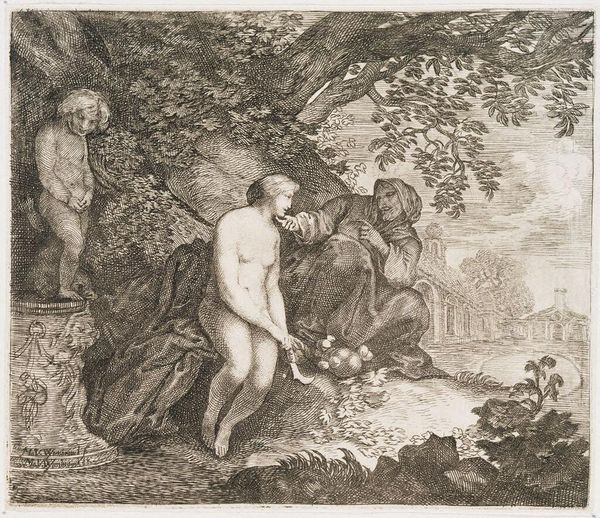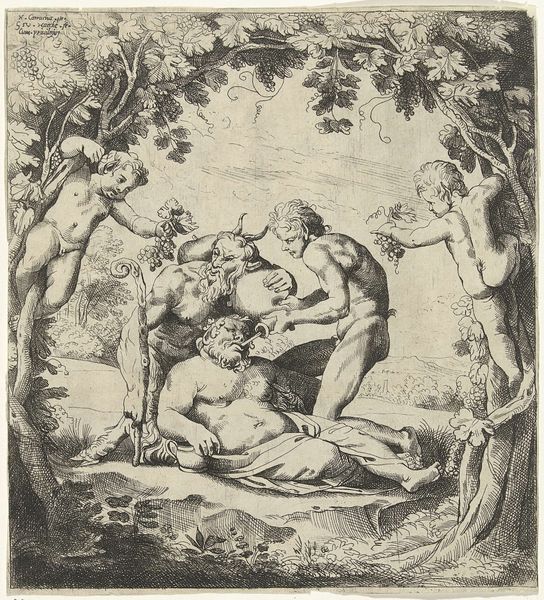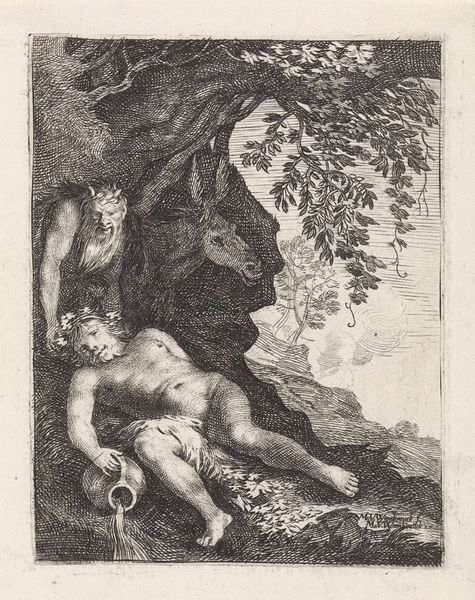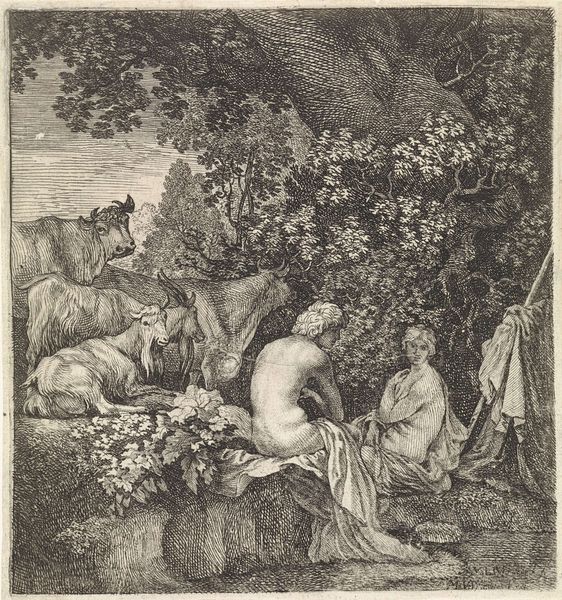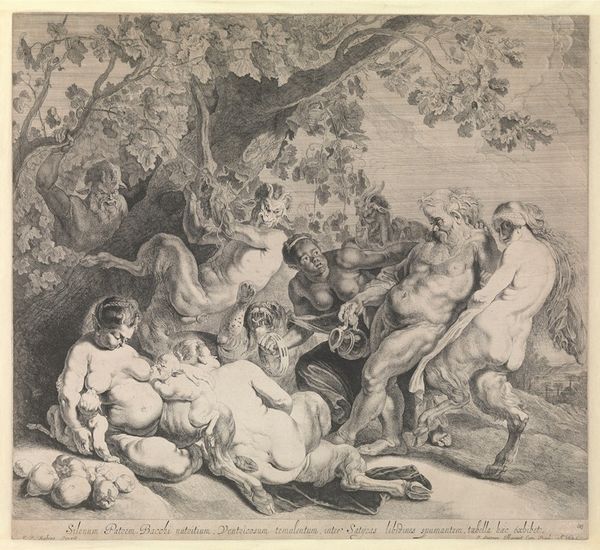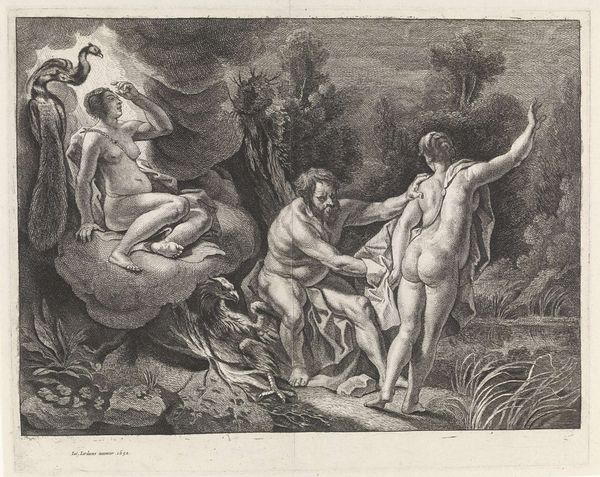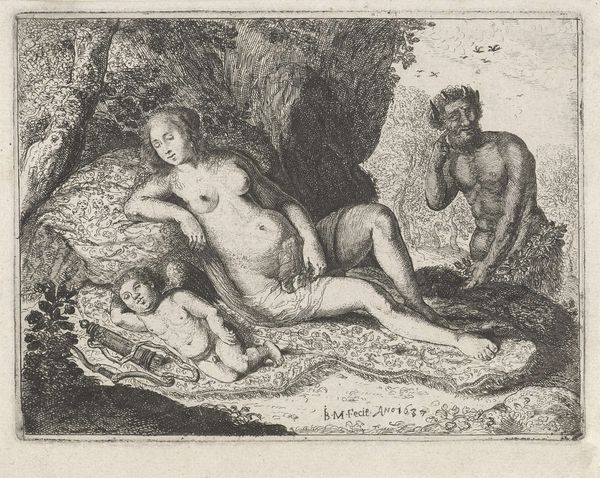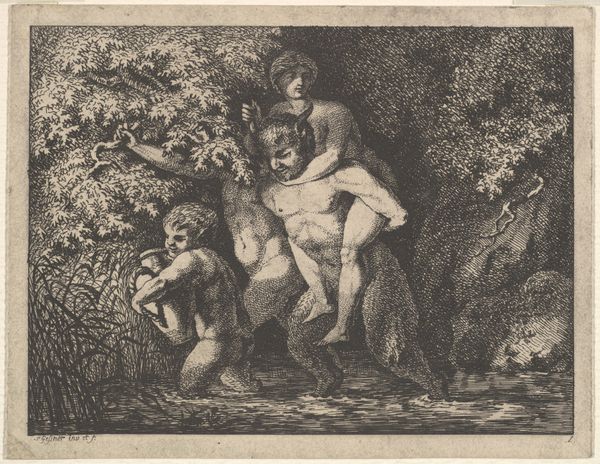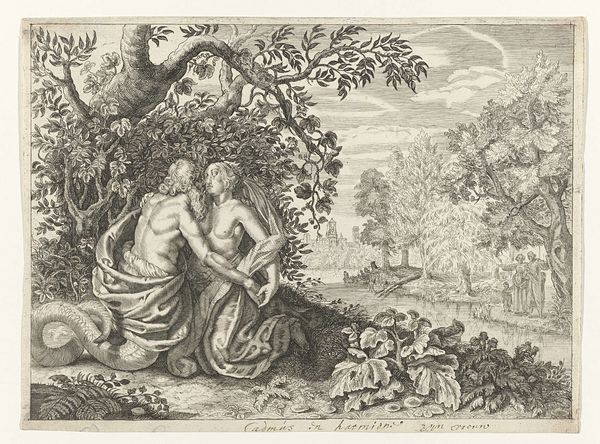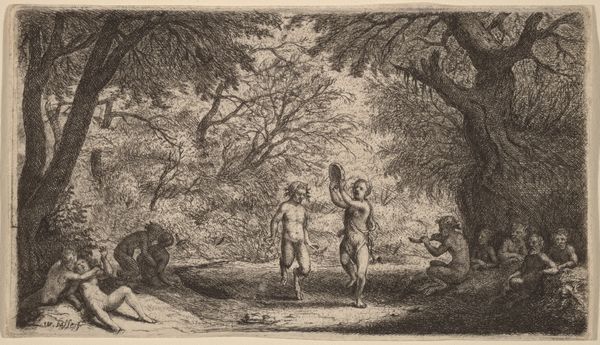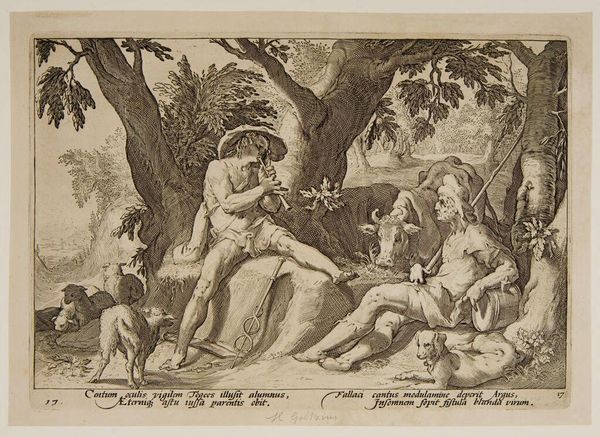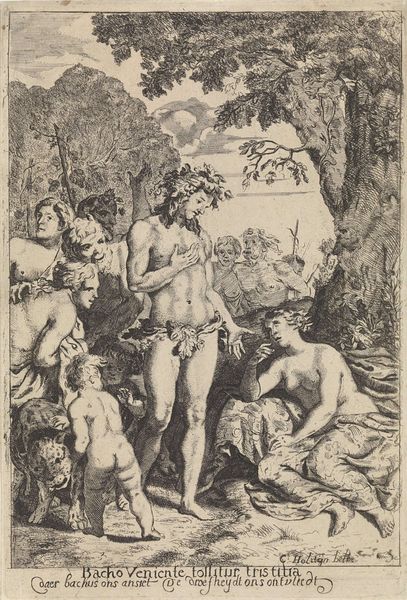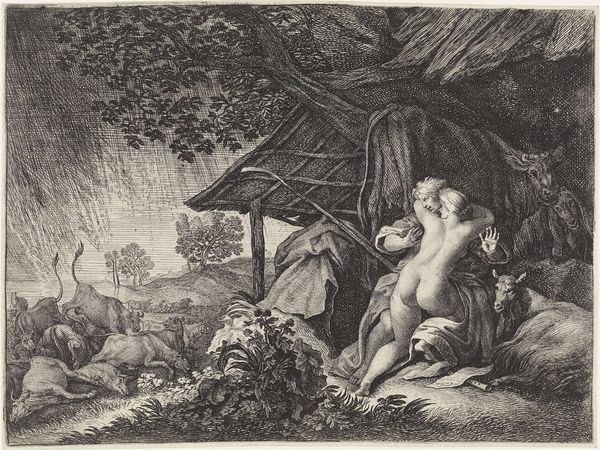
print, etching
#
allegory
#
baroque
# print
#
etching
#
landscape
#
figuration
#
genre-painting
#
nude
Dimensions: height 124 mm, width 146 mm
Copyright: Rijks Museum: Open Domain
Curator: Welcome. Here we have an etching by Moyses van Wtenbrouck, likely created sometime between 1600 and 1660. It’s titled "Vertumnus probeert Pomona te verleiden," which translates to "Vertumnus Attempts to Seduce Pomona." Editor: The density of line work gives the scene such a murky, dreamlike quality. It’s interesting how the stark whiteness of Pomona's skin sharply contrasts with the rest of the shaded composition, drawing the eye directly to her. Curator: Exactly. The composition guides our attention. Notice how Wtenbrouck employs varying densities of hatching to describe form and space. See the heavy, almost chaotic lines depicting the tree canopy versus the more delicate, parallel lines that define Pomona's figure. Editor: I see an immediate allusion to the cyclical nature of seduction and transformation. The elderly Vertumnus, disguised as a crone, embodies deception, promising knowledge and change, which speaks to ancient mythic narratives—the deceptive hag being a key archetype. Curator: Good point. That dramatic juxtaposition also reinforces a sense of visual imbalance, almost as if the figures aren't quite grounded in the space they occupy. Wtenbrouck uses formal relationships to provoke tension within the print. The Cupid on the left is separate on a stone pedestal, as well as a spatial gap. Editor: Speaking of which, the inclusion of Cupid seems an almost mocking reminder. His downward gaze is knowing; is this merely divine manipulation? I would love to see a study of the building or garden house in the back and how this would affect the meaning. The artist gives us subtle, coded hints toward the conclusion. Curator: Perhaps that backdrop lends another layer: the domestication of nature, reflecting Pomona's own sphere of influence as a goddess of gardens and orchards. A civilization symbol of power. Editor: So, the building and grounds represent power, as does Vertumnus who also stands for a sort of transition... but Pomona remains steadfast to that power, resisting transition as well. A fascinating glimpse into Dutch views of the classical world! Curator: A very subtle interpretation. This analysis reveals the formal aspects and iconography together create a visual rhetoric all their own. Editor: Yes, it suggests, even through stark monochromatic strokes, layers of symbolic tension.
Comments
No comments
Be the first to comment and join the conversation on the ultimate creative platform.
